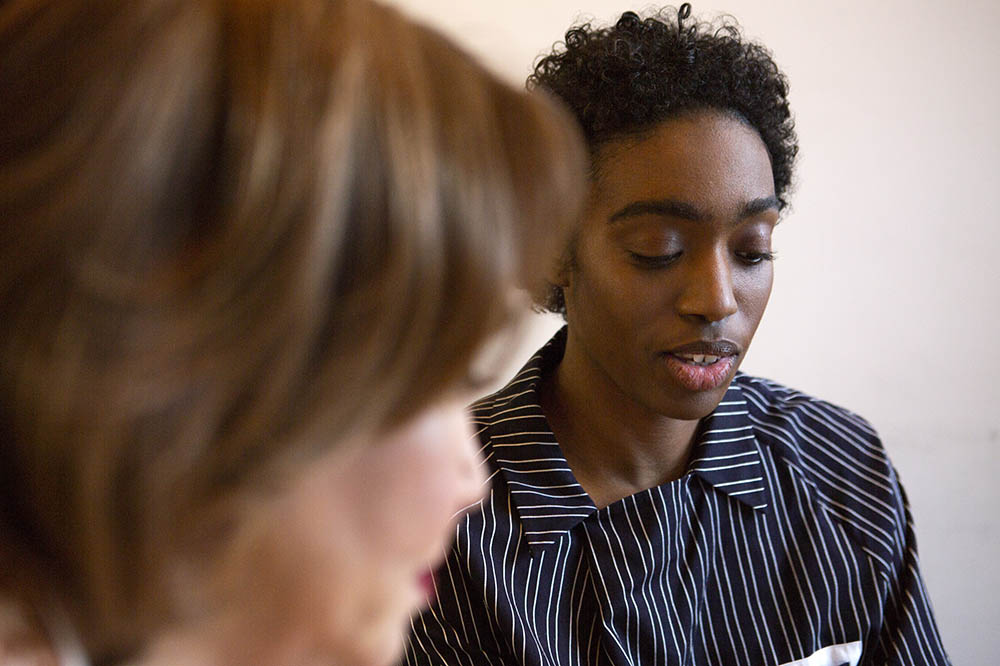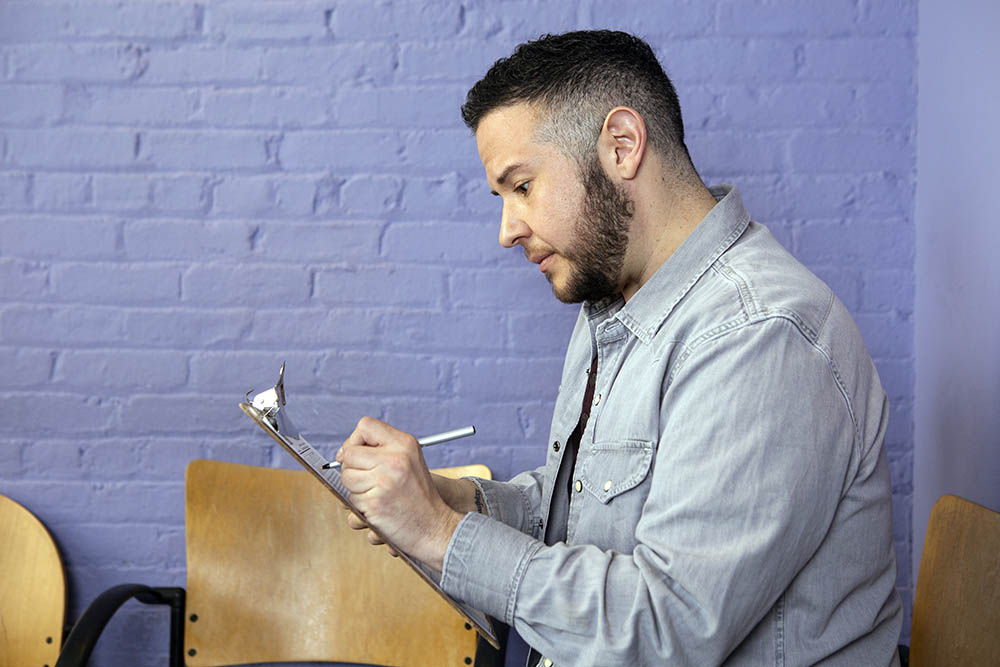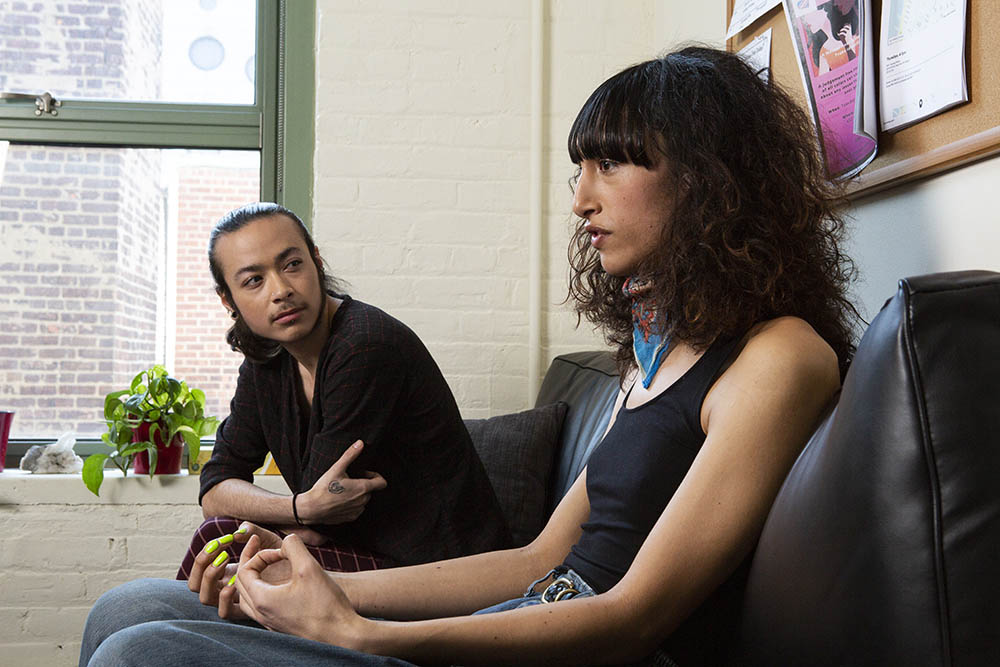We live in a world where death is everywhere – and increasingly so; every day we turn on the news or open Twitter only to be met with brutal images of death, reminders of our mortality, and stories about how the end of life looms large in the decisions we make. There’s death at the grocery store and on the packages that come into our homes; there’s death at the voting booth and in refrigerated trucks parked outside of hospitals – images embedded in our consciousness.
This ubiquity is not unique to this particular moment in time, although it’s certainly more concentrated. It’s also at odds with, what is for many, a deeply death-phobic society which makes for our collective coping of grief an oft deeply flawed and fraught process.

The Death Positive Movement means a lot to me; as an acutely death phobic child, it took me a hearty dose of therapy after a death in the family to start to grasp the enormity of the concept. The first time I remember feeling even remotely comfortable being around and talking about death was when we learned about Ancient Egyptian funerary rituals in the 4th grade; I was rapt with the way they ritualized death, and their beliefs about the afterlife assuaged my childhood concerns about the finality and unknown of it all. Death Positivity is a movement that seeks to remove stigma and shame from conversations about death and grief; to be death positive is to understand that thinking about and talking about death are normal and that people experience death and grief in different ways. Having honest conversations about death fosters a healthy relationship with it. Death positivity radicalized my understanding of mortality, grief, and death; it also helped me contextualize my love of thriller and true crime as an outlet to cope with my medical trauma.
When I talk about the amazing impact death positivity has had on my life with friends and family the response is decidedly mixed; my family, once confused by why I was watching weekly videos about famous corpses and notorious crematorium disasters, now understand death positivity to be an incredibly nuanced and powerful outlet make the relationship I have with grief healthier and less traumatizing. But while telling your friends and family about death positivity is one thing, sharing this world with our medical providers – especially our therapists, can prove complicated, uncomfortable, and challenging.
My good friend Hayley Farless, a reproductive justice advocate, shared that she brought death positivity up in therapy to explain how it was helping her cope with witnessing an unexpected and very graphic death and the trauma resulting from that. “I was scared,” she says. “Therapists are people living in this society too, and even though they’re professionals with more tools for coping with death or grief, we can only assume they’ve absorbed the same ‘death is scary and bad and we have to be quiet about it’ mentality like the rest of us.”
She also said she was worried her embrace of death positivity could be misconstrued as a risk to her safety. “I’m a person with an anxiety disorder and clinical depression, and those conditions have a medical association with suicide. I was worried that I could be involuntarily hospitalized if my therapist were to misunderstand what death positivity is and think my life or my safety was at risk.”
Thankfully after some explanation, Farless feels her therapist heard her out and understood where she was coming from; she says the conversation was uncomfortable at times, but critical for her and her therapist moving forward in her care.
“It was really important to me to bring it up because death positivity and the acceptance of grief and the idea of a ‘good death’ are all so central to how I am coping with both the trauma that I experienced and my chronic depression,” she says. “…now she can better understand my perspective and provide care for me in a way that’s more meaningful to my thought process.”
Farless says death positivity can help us move towards a more sociocultural understanding of death. “There are many ways we can improve our inevitable deaths for ourselves, our families, our communities, and our planet if we’re just willing to actually engage with the idea of death.”
And these days, having a conversation about death positivity with your therapist might be more valuable than ever.

“Everyone is facing death anxiety now, on a massive scale. What better, more rational time to engage your feelings about your own mortality?” says Doughty, Order of the Good Death founder, and a leader in the death positivity movement.
But how to approach them with the comfort and clarity needed for a productive outcome?
Doughty says first and foremost, “nothing should be off limits in your therapy sessions… There should never be a palpably negative reaction from a therapist to a discussion of death. If there is a negative reaction, it’s 100% not your fault.”
She suggests opening the conversation by asking if your therapist has heard of death positivity; if they haven’t she says asking a simple question can be a great jumping off point: “let them know that it’s a popular movement that claims shutting down and repressing conversations around death has had a negative effect on our society. Ask if they agree with that statement.”
Megan Devine is a Licensed Professional Counselor, grief advocate, and founder of Refuge in Grief; she says opening up to a therapist about exploring death positivity can be tricky, but there are ways to make the process smoother.
The two main things to consider, she says, are the tone you bring to the conversation, and the possibility that your therapist might associate “death positivity” on its face with suicidality. She wrote a fantastic guide on how to navigate the latter, which you can read here.
“Sometimes our excitement and interest in death positivity can make us not as clear as we might be or as sensitive to the fact that this might be new for the provider in the room,” she says. Communicating with too much enthusiasm might convey the wrong idea about your investment in the topic. She also suggests opening with a question to discern how familiar your therapist is with death positivity and to gauge their reaction as a read on how open they may be to having a discussion about it. From there she says, try to summarize death positivity in what it means to you in a few short thoughts that are hard to misinterpret. “I would say something like, ‘To me, death positivity is simply being willing to talk about death and not shying away from the discomfort or the weirdness that comes up… Death positivity is finding ways to talk about death as a normal thing that we all experience.’”
You’re looking for “curiosity, instead of condemnation,”; every therapist is not going to be comfortable talking about grief or know about death positivity, but your therapist should indicate an openness to learn more and to understand why death positivity is important to you.

“You have permission to fire a therapist who refuses to be curious about your experience,” she stresses. She also says if you find your therapist has a judgmental reaction to death positivity but you’ve worked with them for a while, you should also feel comfortable opening up a conversation with them about why that interaction was hurtful or uncomfortable for you and try to move forward with that understanding. What’s important – she says – is that you remember your therapist is there to help you and to meet your needs.
Talking about death in therapy, whether it’s weighing on us in an explicit way or not, has value. Devine explains that often, the root of all our fears is – at the end of the narrative: death. “There’s a school of thought in therapy that is like so, if somebody comes in and says, ‘I can’t do such and such,’ the therapist is supposed to say, ‘Why not?’ And then the person is like, ‘Because this, this, and this will happen.’ And then the therapist is supposed to say, ‘And then what?’” The answer at the end of all the and-then-what’s is almost always death. “In that sense, the fear of death is the foundational root of all distress and all decision making.”
Echoing Megan, Sarah Chavez, one of the founders of the death positivity movement, and the Executive Director of the Order, says the phrase “death positive” can need some unpacking with the unfamiliar, especially when people focus on the “positive” aspect of it. “They immediately jump to the conclusion that this indicates a desire to die, or that we’re dismissing the pain and grief that accompanies it or encouraging people to ‘look for the silver lining in death,’ but, of course none of this is true.”
She suggests using other, more easily recognizable movements with similar framing to help broach the topic with your therapist.
“I like to preface introductions to death positivity by first grounding the conversation in something that the other person may be familiar and comfortable with like Sex Positivity, or Body Positivity – movements that are also about open discussion, education, and self- awareness.”
“Death positivity is about life,” says Chavez. “Conversations about our mortality are not only critical to our mental health but our understanding of self, and how our fear of death underlies our behavior, beliefs, actions and the choices we make.”
For more helpful framing and facts about death positivity, and resources to share with your therapist if you’re inclined, Chavez suggests the Order’s website and FAQ page. There you’ll find an “outline of basic tenets, Its potential to change both ourselves and the world for the better, and help dismantle the roots of inequality, racism, and social marginalization.”
